Amazon parrots, which are often called amazons, are large members of the Psittacidae family. They are mostly native to South America. There are 35 species and several subspecies, and many can be trained to be talking birds to some extent. Physical features include big, powerful bills to crack the nuts they find in their native habitat and multicolored plumage. Mental features are high intelligence, curiosity, and a bold personality. Read on to learn more about these incredible birds.
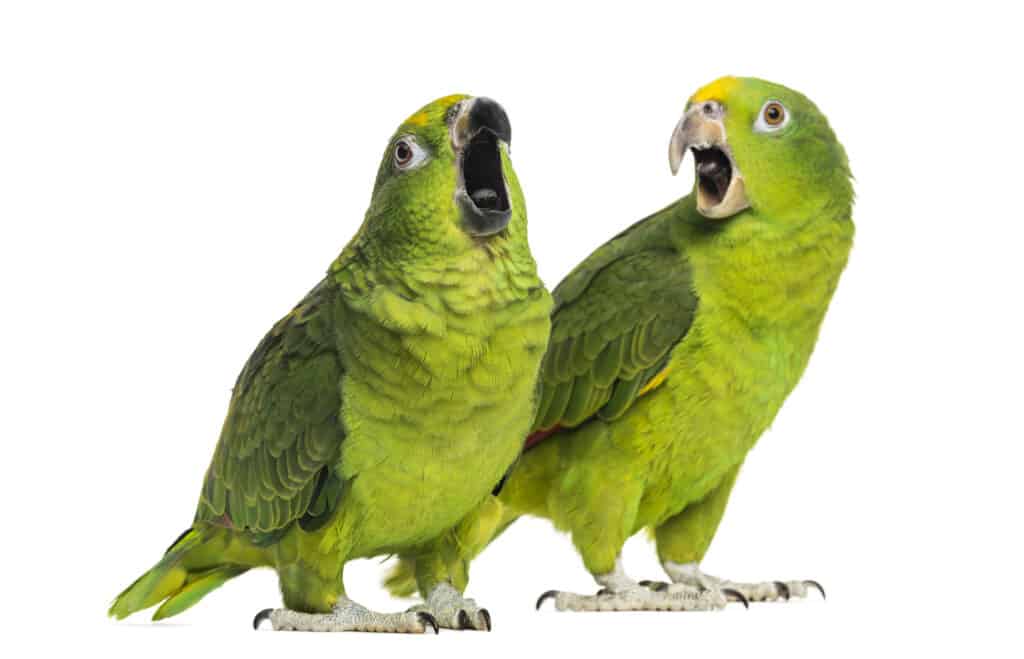
The parrot is believed to have evolved over 59 million years ago, in Gondwana, the once ancient super subcontinent that formed after Pangaea broke up. Although scientists believed that birds evolved from an ancient bird-like dinosaur, Archaeopteryx, which is the oldest known fossil bird and was found in the Gobi Desert and lived during the Cretaceous period, over 100 million years ago.
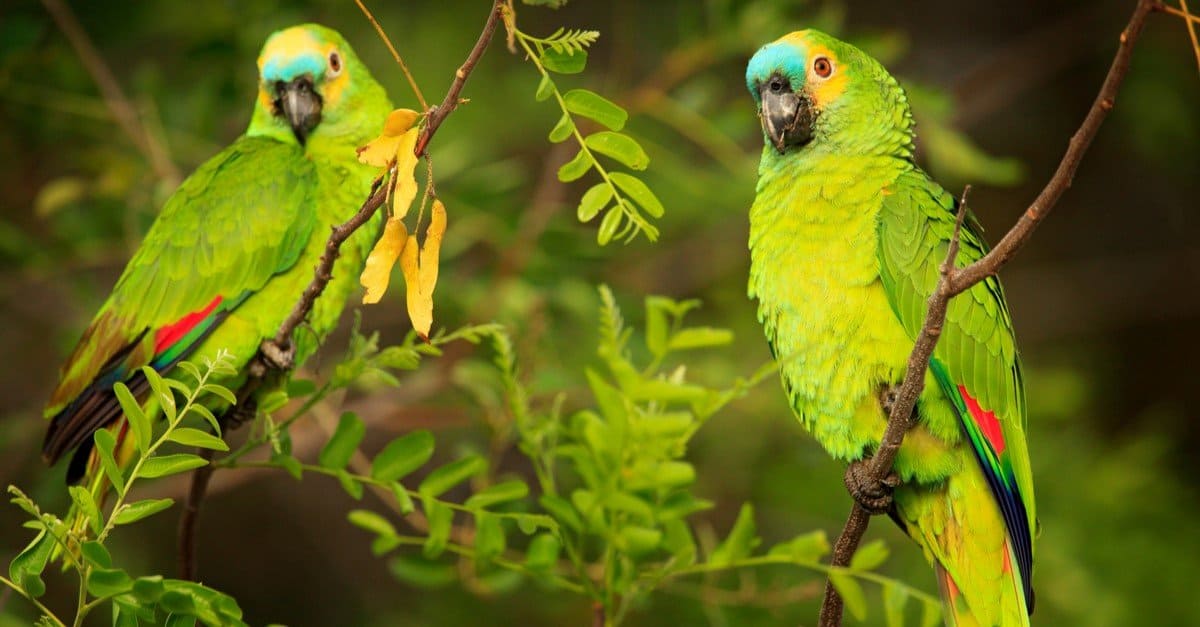
The Amazon parrot was able to spread out to areas of the Caribbean around 3.5 million years ago, which is hypothesized to be because, during this time, the periods of the sea levels were lower, which is thought to have made travel easier from mainland Central America to the islands.
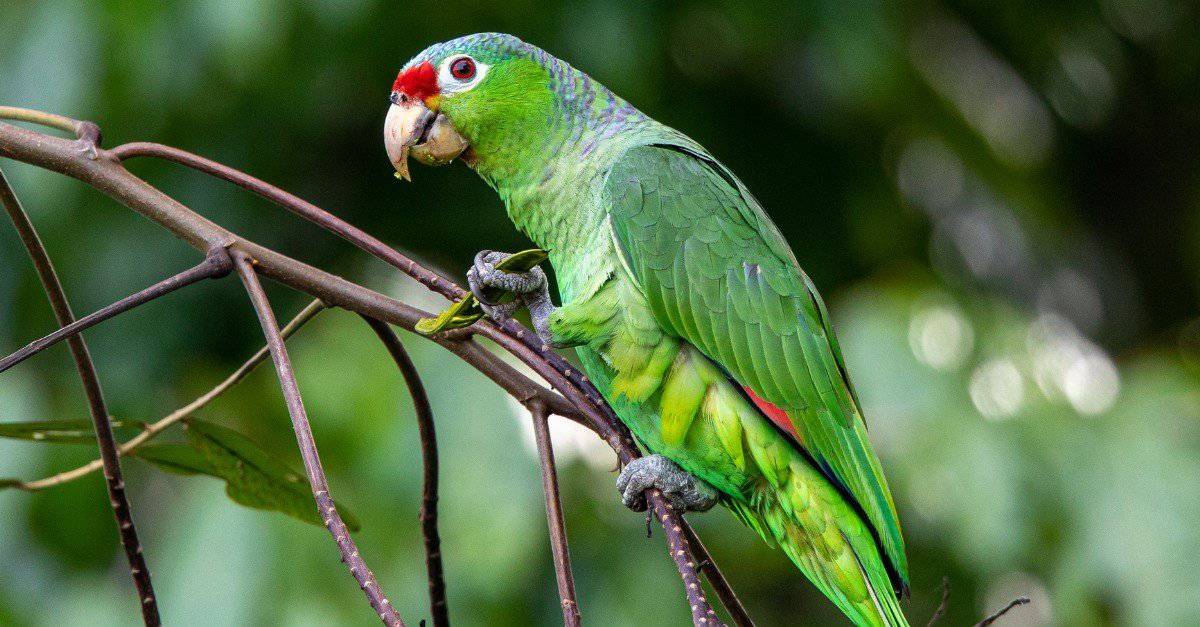
It is difficult for humans to tell some male and female parrots such as the blue-fronted Amazons apart. The difference between males and females in some parrots is only apparent in the ultraviolet range, which humans can’t see. Males might be a bit larger in some species.
Amazon parrots are social as a group and travel together in large flocks. They also nest in the same area. The purpose of this behavior is to give the birds protection from predators. They communicate both vocally and through gestures. The vocalizations of Amazon parrots are quite diverse and can be rather loud. Parrots scream, screech, growl, rumble, bugle, and squawk.
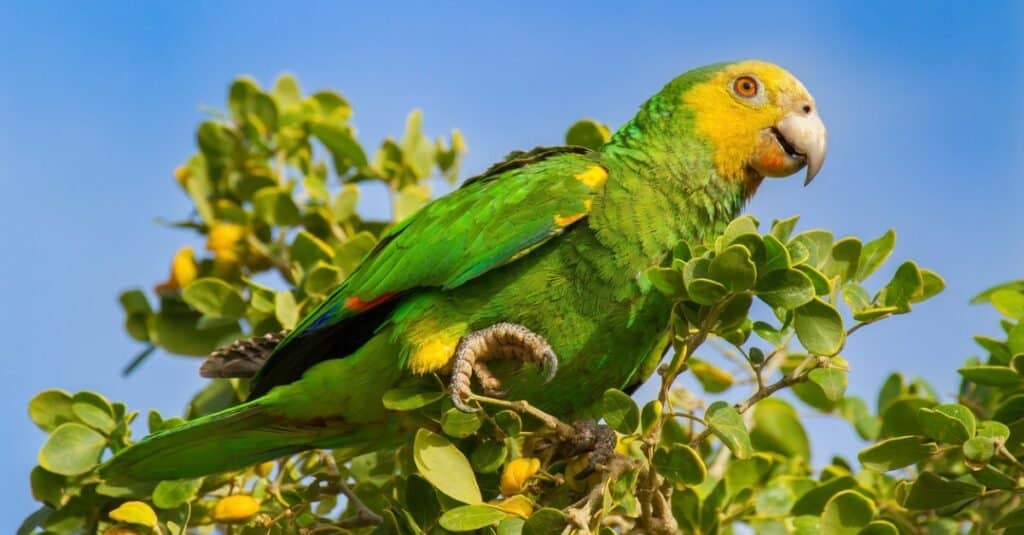
These parrots are herbivores, and their food includes nuts, seeds, berries, flowers, fruit, and leaves in the wild. In captivity, they can be given pellets formulated for parrots that are supplemented with fresh fruit and vegetables. They shouldn’t be fed seeds and nuts all the time because these items have too much fat, and obesity can be a problem with captive amazons. Of course, the parrot must have access to fresh water every day.
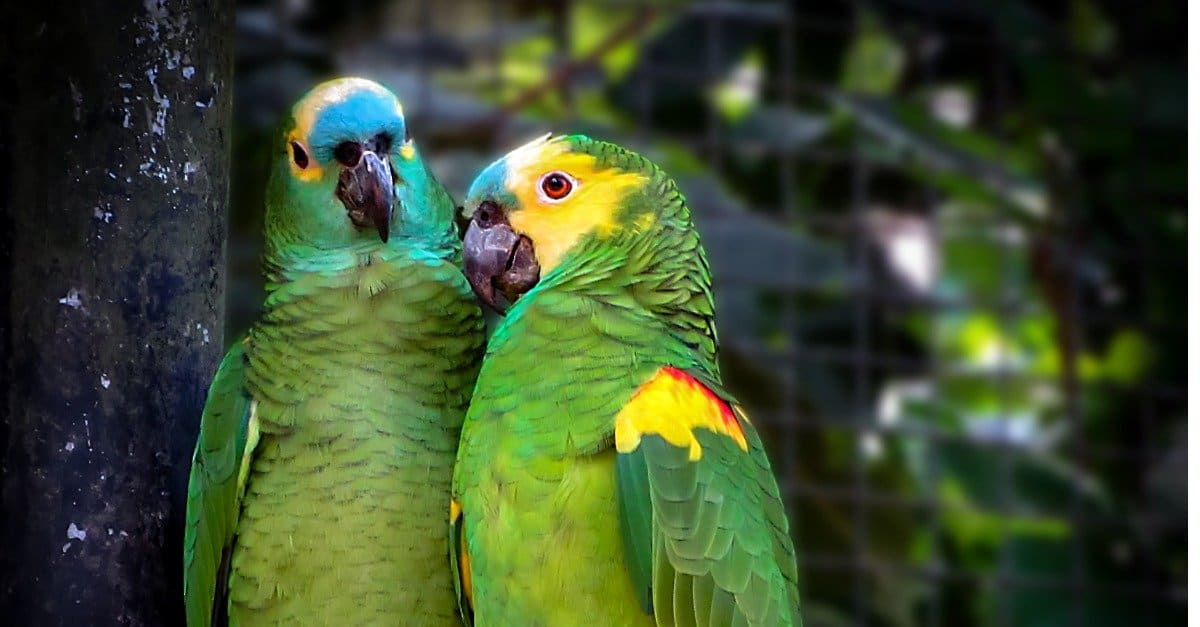
Most parrots construct a nest in a tree cavity, and the female lays between two and five eggs, which she incubates for about a month. During that time the male feeds her, then helps her feed the chicks, which are born helpless. Chicks are fledged after about two months. Biologists don’t know when many of these parrots reach maturity, but it’s believed that blue-fronted parrots are mature when they’re two to four years old. Amazon parrots are amazingly long-lived and can have a lifespan of as long as 100 years if they are given good care.







